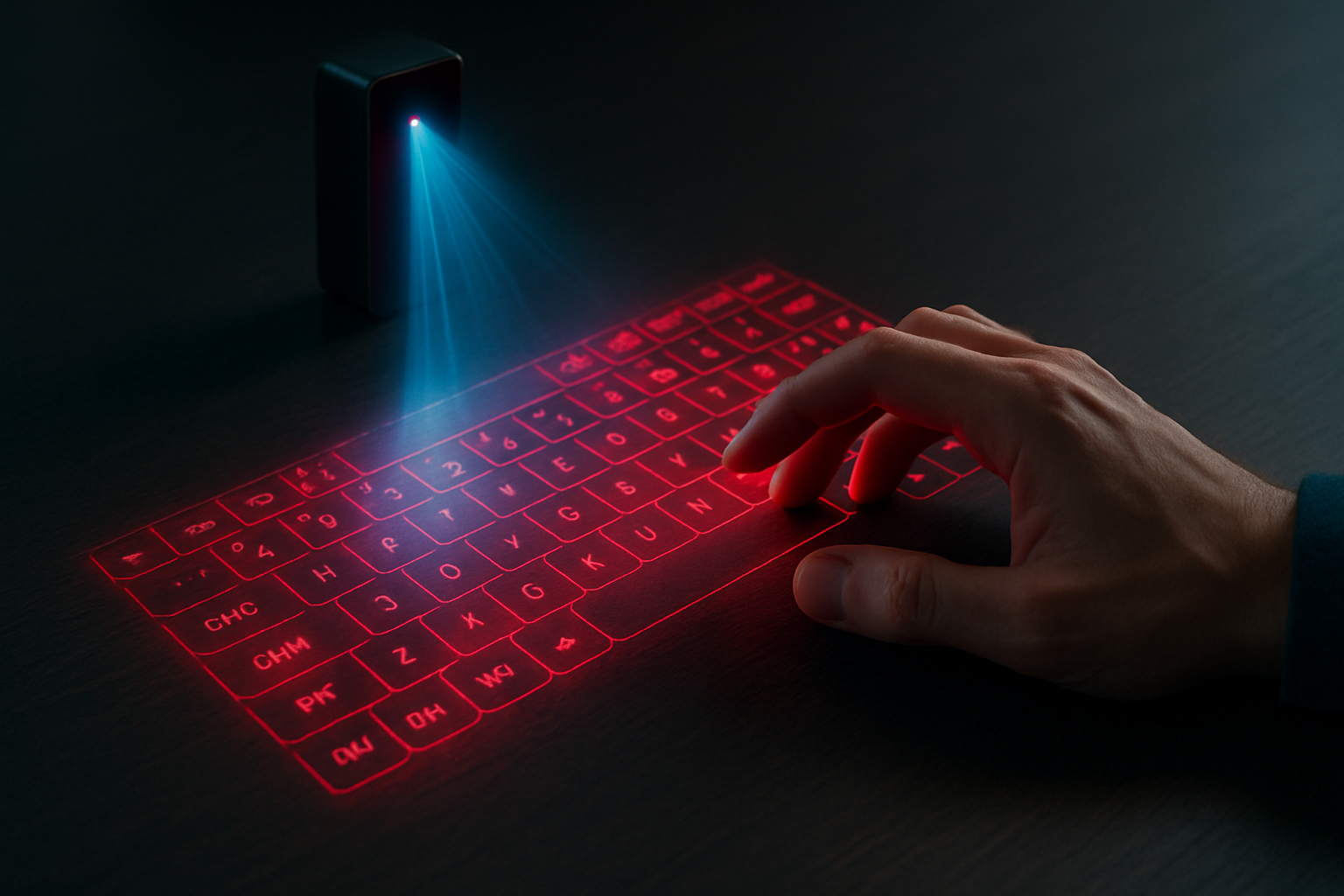Holographic Keyboards: Typing in Thin Air
In a world where technology constantly pushes boundaries, holographic keyboards are emerging as a futuristic input method that could revolutionize how we interact with our devices. These ethereal interfaces project a virtual keyboard onto any flat surface, allowing users to type without physical keys. As we delve into this cutting-edge technology, we'll explore its potential to transform computing, mobile devices, and even augmented reality experiences.

From Sci-Fi to Reality
What was once the stuff of science fiction has now become a tangible product. Several companies have already brought holographic keyboards to market, with prices ranging from $100 to $300 for consumer models. These early iterations demonstrate the technology’s potential, but they’re just the beginning of what could become a ubiquitous input method in the near future.
Advantages in a Post-Pandemic World
In an era where touchless technology has gained newfound importance, holographic keyboards offer a hygienic alternative to traditional input methods. With no physical surface to disinfect, these virtual interfaces could find applications in public spaces, healthcare settings, and shared workstations. The reduced risk of germ transmission makes holographic keyboards an attractive option for high-traffic areas.
Portability and Flexibility
One of the most significant advantages of holographic keyboards is their extreme portability. With no physical components beyond a small projector, these devices can be easily integrated into smartphones, tablets, or even wearable tech. Imagine pulling out your phone and instantly having a full-sized keyboard at your disposal, or typing on your smartwatch without fumbling with tiny on-screen keys.
Challenges and Limitations
Despite their futuristic appeal, holographic keyboards face several hurdles before widespread adoption. Current models struggle with accuracy, often requiring users to type more slowly and deliberately than they would on a physical keyboard. The lack of tactile feedback can also be disorienting for touch typists accustomed to feeling key presses. Additionally, the technology’s reliance on flat surfaces limits its usability in certain environments.
The Future of Holographic Interfaces
As the technology matures, we can expect to see holographic keyboards evolve beyond simple text input. Future iterations could incorporate gesture controls, allowing users to manipulate 3D objects or navigate complex interfaces with a wave of their hand. This could open up new possibilities for design, gaming, and productivity applications.
Integration with Augmented Reality
The true potential of holographic keyboards may lie in their integration with augmented reality (AR) systems. As AR headsets become more sophisticated, holographic keyboards could serve as a bridge between the physical and digital worlds. Users could type on invisible keyboards while viewing the results through AR glasses, creating a seamless blend of reality and virtual interface.
Accessibility and Customization
Holographic keyboards offer unique advantages for users with physical disabilities or ergonomic needs. The ability to project a keyboard at any size or angle could make typing more comfortable for those with limited mobility. Furthermore, customizable layouts could allow users to create personalized keyboard designs tailored to their specific requirements.
Environmental Impact
As we consider the future of computing peripherals, the environmental impact of traditional keyboards cannot be ignored. Holographic keyboards present a potentially eco-friendly alternative, eliminating the need for plastic components and reducing electronic waste. This aligns with the growing demand for sustainable tech solutions in an environmentally conscious market.
The Road Ahead
While holographic keyboards are still in their infancy, their potential to transform how we interact with technology is undeniable. As researchers continue to refine the technology, addressing issues of accuracy and tactile feedback, we may soon find ourselves effortlessly typing on beams of light. The journey from concept to commonplace may be long, but holographic keyboards represent a significant step towards a more intuitive and immersive digital future.





